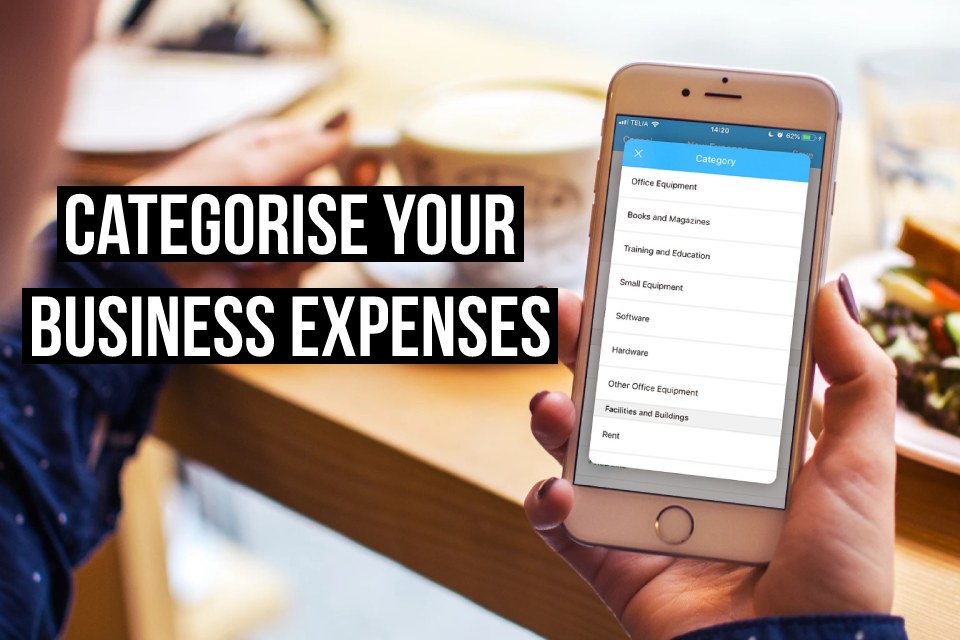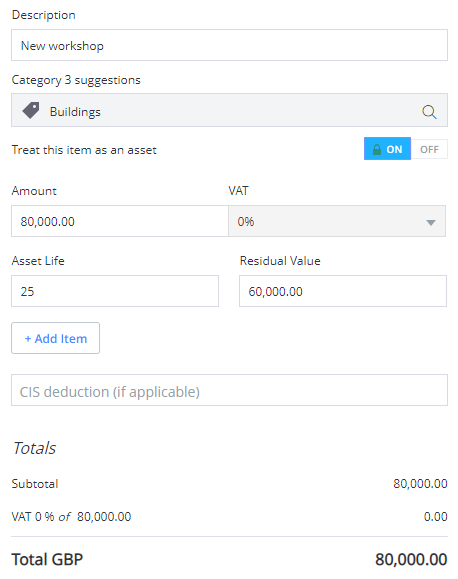From utility bills to marketing costs, travel expenses to employees’ wages, businesses incur a number of different expenses, and it’s important that you sort these costs into different business expense categories.
In this blog post, we look at why it’s important to categorise your business expenses, and how Debitoor can help you keep your expenses organised.

How to use business expense categories in Debitoor
Categorising business expenses is easy with expenses software like Debitoor. When you upload an expense, you’ll have the option of entering a brief description. Debitoor will automatically suggest a few different expense categories based on the description you enter. You can also select an entirely different category from our extensive list of business expense categories.
Benefits of using business expense categories
Expense categories might seem like unnecessary extra details, but sorting your costs in to different categories can help with your accounting and bookkeeping in a number of different ways.
Easy overview of how you spend your money
One of the most obvious advantages of categorising your business expenses is that expense categories make it easier to understand how you’re spending your money.
When you log in to the Debitoor web app, the first page you see gives an overview of your income and expenses. You can see how much money is coming in to your business, how much money is going out, and how these two figures compare.
The expenses section shows the five expense categories with the highest expenditure to help you visualise where your money is being spent, whether you’re prioritising the right expenses, and whether you’re sticking to your budget.

You can also select a number of different time frames, and this is particularly helpful for businesses affected by seasonality, which often results in spending more money in some months than in others. Being able to switch between a monthly overview and yearly overview helps you understand whether you’re overspending or whether you’re still on track for your yearly budget.
Expense categories in financial reports
While graphs and quick figures are helpful for an instant overview of how your business is spending its money, for an in-depth understanding of your business’s finances, you’ll need to create financial reports.
With Debitoor, you can generate up-to-date balance sheets and profit and loss statements with just a few clicks, and both of these reports use business expense categories. The balance sheet compares your assets, equity, and liabilities, while the profit and loss report compares your income with your direct and indirect costs.
It’s therefore essential that you indicate which category each of your business expenses fall in to so that the cost can be categorised correctly in your financial reports.
Process expenses as assets
Another key advantage of using business expense categories is that it becomes easier to process expenses as assets, which are items that are expected to be useful and add financial value to your business over an extended period of time.
When you make a purchase for your business, it’s important that you distinguish whether it’s an asset or a regular expense because the way you should record an asset differs from the standard way of recording an expense. Assets should be recorded using a process called depreciation, which involves spreading the cost of the asset over the time period in which it adds value to your business.
Certain business expense categories are more likely to be assets than others, and Debitoor uses expense categories to understand whether your expense should be treated as an asset. For example, PP&E is always considered an asset, so if you purchase a building, Debitoor will automatically treat the expense as an asset.

The correct tax rates for each expense category
In the UK, goods and services can be taxed at 20%, 5%, or 0%, but they can also be exempt from VAT. When you record your business expenses, it’s important that you select the correct rate of VAT, as this will affect the calculations that determine how much VAT you should pay or reclaim from HMRC.
Categorising your business expenses can help make sure that you select the correct tax rate and don’t enter a too high or too low percentage by mistake. With Debitoor, if your purchase falls in to an expense category that’s taxed outside of the 20% standard VAT rate, you’ll only be able to select from the correct tax rates for that category.
For example, postage stamps are VAT-exempt, which means that you don’t pay VAT on any stamps you purchase. If you indicate your expense should be categorised as postage stamps, you won’t be able to add tax.

Similarly, wages and salaries are not subject to VAT. If you accidentally apply VAT to your payroll expenses, this amount will be included in your VAT calculations, which could result in an incorrect VAT Return. But if you select a payroll-related business expense category, you won’t be able to apply VAT, so you can be sure that you’ve recorded the expense correctly.
